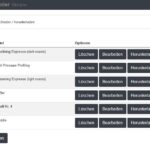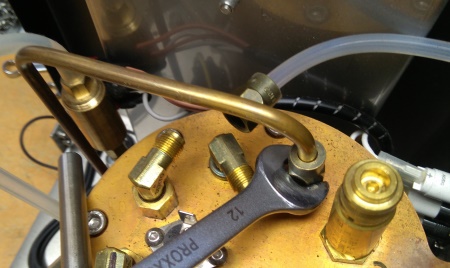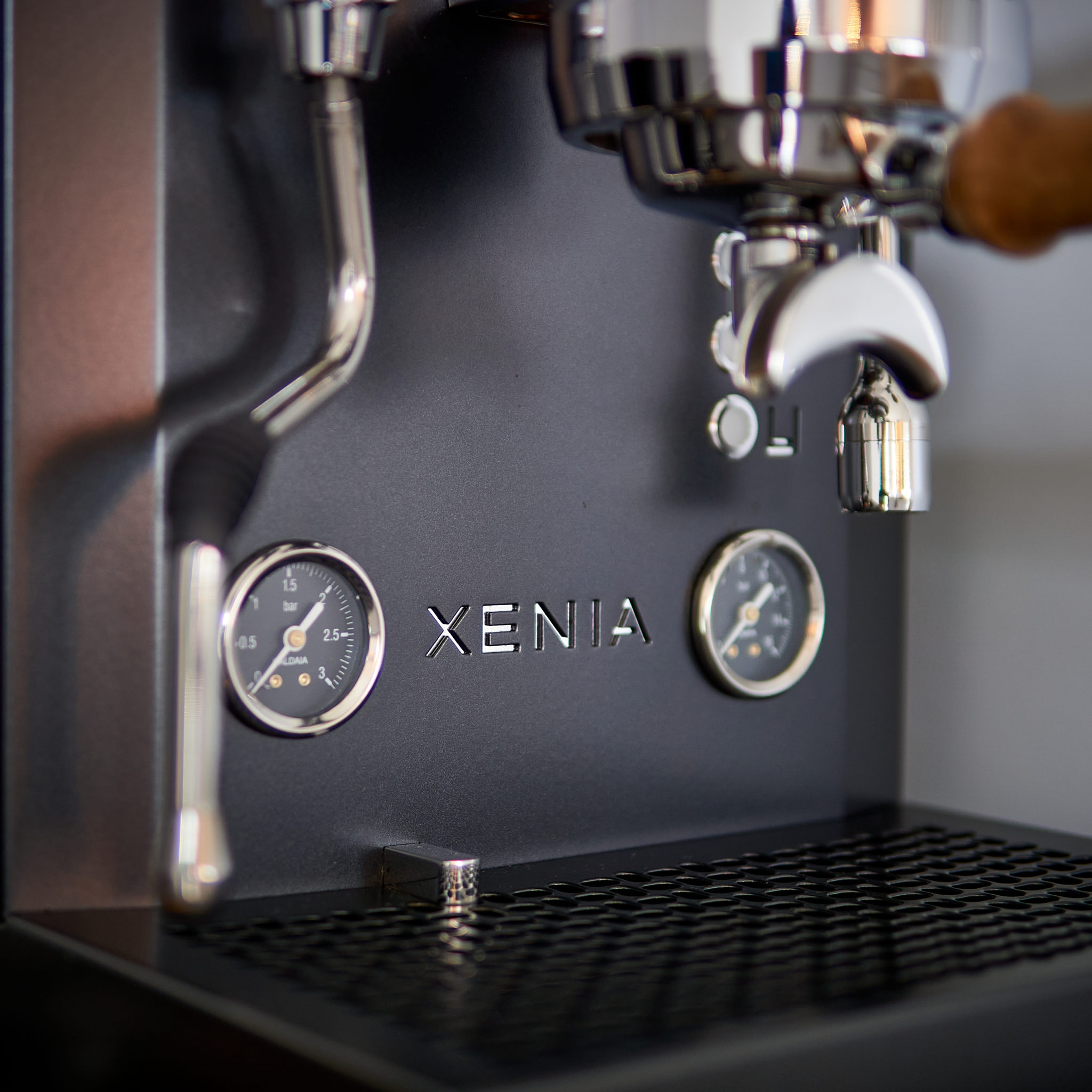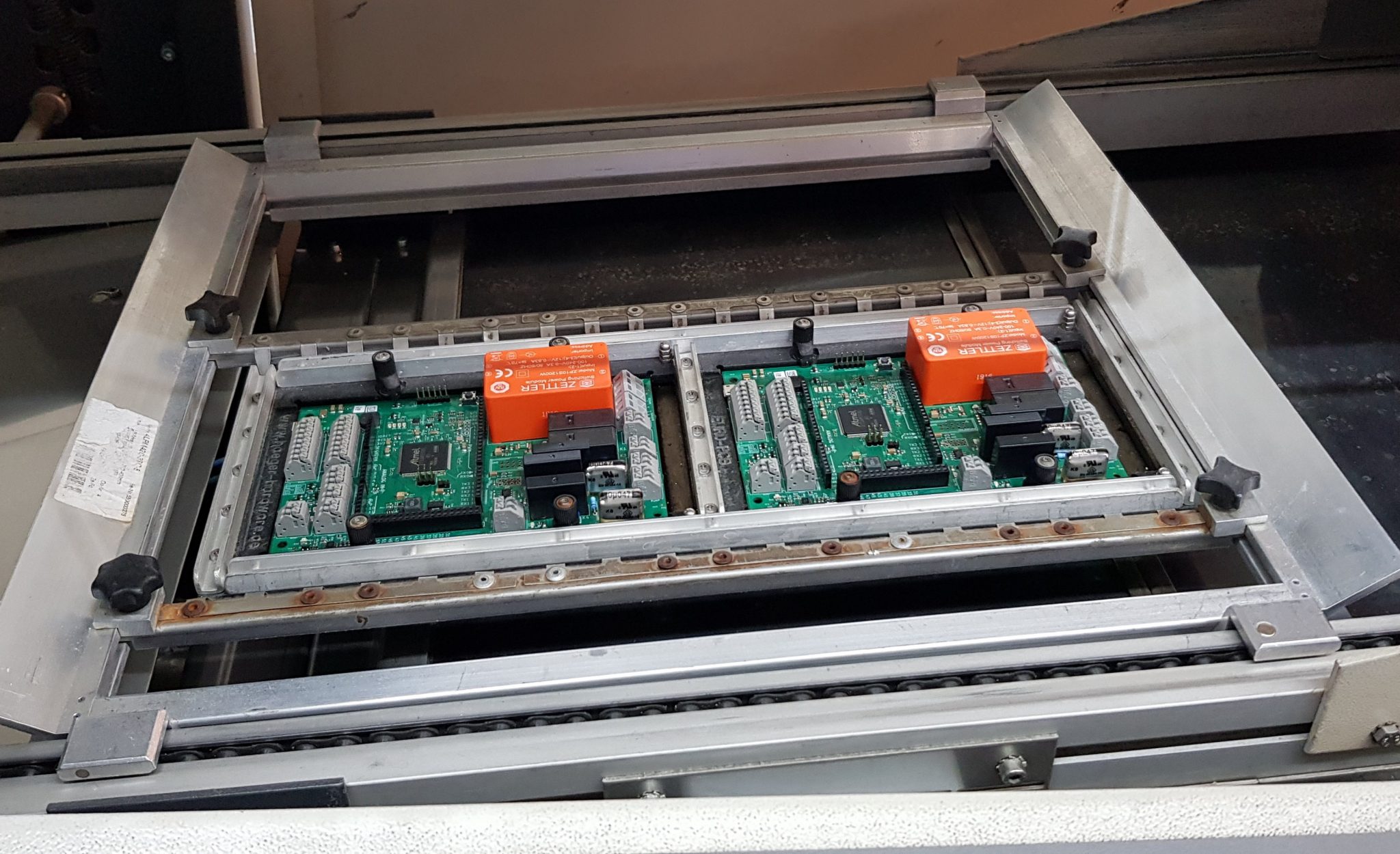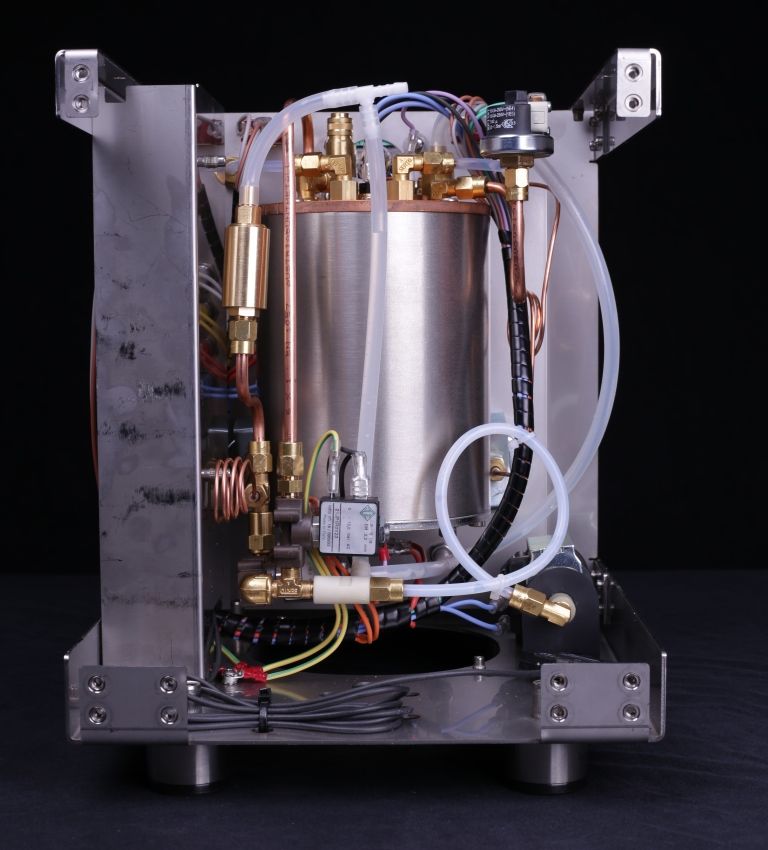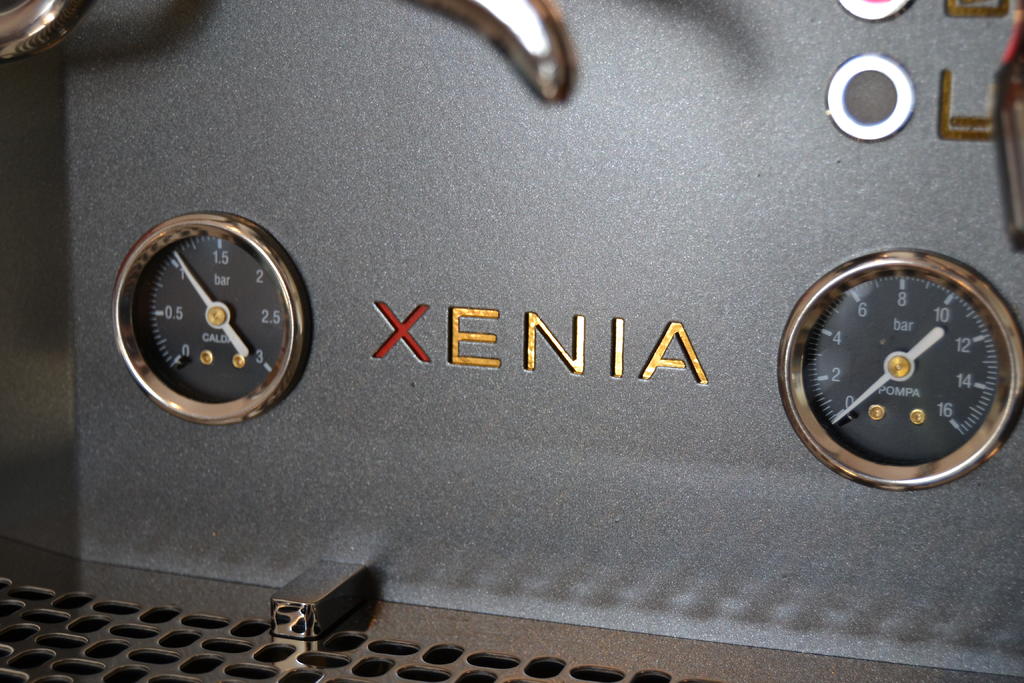The Goals of Development
In order to be able to take a stand against the established competition with a new machine, there were essentially 4 goals that one should meet in a recognisable manner for potential customers.
- The machine must be able to make Italian espresso and cappuccino.
- It has to be technically attractive.
- It has to look good.
- It has to be 'made in Germany'.
The first point is easier to meet than you think. With the right grinder and roast, you've already achieved a lot and the machine just shouldn't do too much wrong. You can actually say: Most portafilter machines do this because of their design.
The second point is a little more difficult. There are 2 reasons for this. On the one hand, the 'portafilter concept' is almost sufficient in itself to guarantee good espresso and cappuccino. And on the other hand there is a technical implementation for a portafilter machine that has dominated the market since the early 1960s: machines with so-called E61 brew groups. In 1961, Italian technicians designed a very good system, according to which most machines are built up to this day. With the loss of patent protection, market penetration has increased even further. Machines with E61 groups have a few advantages: The groups can be bought for little money and the machines run very well with very little technical effort. In addition, potential customers easily recognise machines with this group as real espresso machines: Machines with the E61 group have the sales success already built in and do not need to be explained.
But they also have weaknesses, which are accepted due to the lack of alternatives. This is a bit like with internal combustion engines in cars: You know what "200 HP" means and so far have tacitly accepted the destruction of the environment through use—due to the lack of available and equivalent alternatives.
The main advantage of the machines is also their main disadvantage: If you build the machine exactly according to this pattern, you basically forego any possibility of technically meaningful further development. Of course, the simple controls will be replaced by more sophisticated electronics with a display, but in our opinion they won't achieve any real improvements: the system runs well with and without complex controls.
The vast majority of E61 machines in the very often used classic design (as a heat exchanger machine) need a so-called cooling flush before brewing an espresso. E61 machines usually need around 30 minutes until they are sufficiently heated, which is often too long for home use. Keeping the machine running all the time is quite a waste of energy.
There are a number of other items on customers' wish lists that do not improve the espresso, but they are definitely interesting when it comes to setting yourself apart from the large number of almost identical and functionally identical machines by creating useful and impressive USPs. More on this below.
The third point is of course a matter of taste. Some customers love the massive look of the E61 group. However, many people prefer small machines with a discreetly elegant appearance for their private use. And that combined with the configurability makes our machine very attractive. More on this below.
The fourth point is met by the fact that we produce ourselves.
We started in 2012 to collect these points and then checked and evaluated the feasibility. A 3D model was designed and the concept was refined and suppliers sought over a period of 1.5 years. The search for parts and the manufacturing process in particular caused enormous difficulties. In some cases, manufacturers had no desire to produce small quantities or even samples. Or they accepted first and then withdrew. Or they made samples and then failed to actually produce them. In any case, we put a lot of effort into this and spent a lot of time looking for potential suppliers. This process lasted until mid-2016.
After all, at the end of 2014 it was possible to build a prototype and prove its suitability. Hundreds of measurements in the brew group and in the ground coffee (puck) were made and evaluated in order to optimise further. We have used existing measuring methods and built our own measuring tools for cross-checking purposes. The prototype was dismantled, changed and re-measured about 100 times until we had a constellation that worked. You can follow such measurements here: https://vimeo.com/288944544 .
We went public with this prototype and the measurement results in December 2014 and discussed the entire design with the community in 2015.www.kaffenetz.deA lot of good ideas came together and were implemented. In the end, we had achieved optimum acceptance and were able to take the plunge into production.
It was a long discussion. But it has really paid off for us and our customers. Because in 2016 we launched a product that is well-engineered in every respect.
Technical Attractiveness—2nd Goal
With a slightly different approach you can get some advantages out of the 'portafilter concept'. For example, we do not use the standard controls that almost all machines use. Based on the open source project 'Arduino', we have developed a control that we can programme ourselves and provide it with useful functions.
With additional heating cartridges in the brew group, we don't get the machine up to temperature in the usual 30 minutes, but fall below this value by almost 20 minutes (to approx. 12-13 minutes). This is made possible by targeted overheating in the start phase (with 150 watt cartridges even to less than 10 minutes): https://www.xenia-espresso.de/der-trick/
We also reconsidered the design of the heat exchanger and looked at how to avoid the annoying cooling flush.
Usually the heat exchanger is a downwardly closed immersion tube at the top of the boiler that is always filled with water. After a few minutes of standing, the water takes on the high boiler temperature, overheats and burns the first espresso.
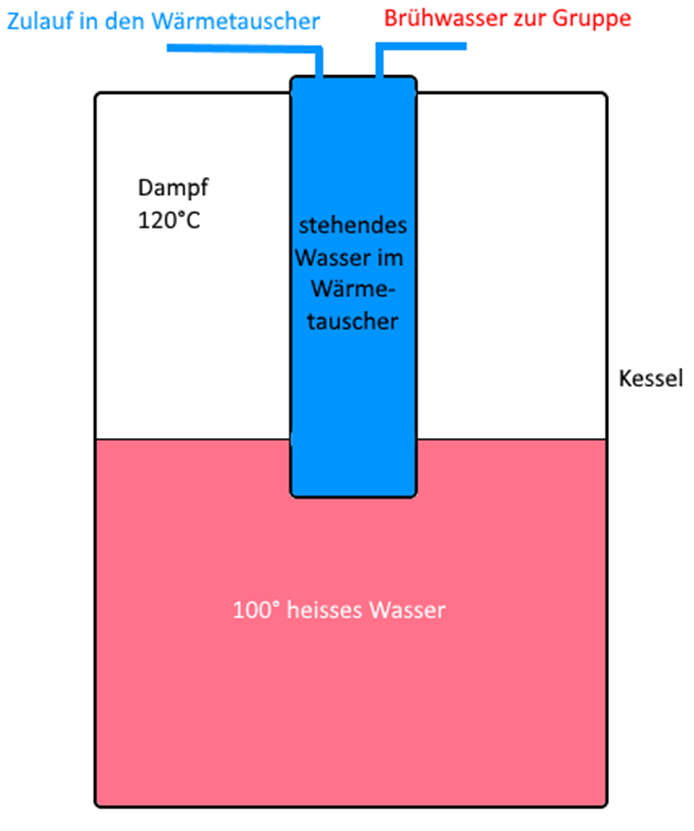
To avoid this, you need a cooling flush. When and how much water has to be removed cannot be specified in general—you have to do it according to your feelings and experience.
We have therefore run the heat exchanger from top to bottom in the form of a slim pipe through the boiler and installed a valve at the bottom that opens after the brewing and allows the heat exchanger to drain.
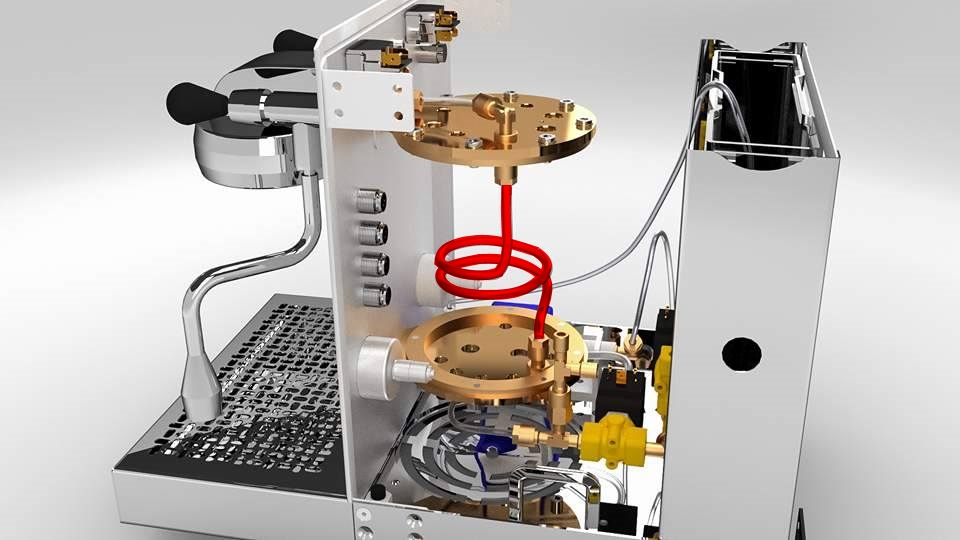
This means that we have the same starting conditions for every extraction: Every brewing begins with fresh water at room temperature. It is brought to espresso temperature in the heat exchanger and is not overheated due to its standing time in the heat exchanger. This measure is very simple, very effective and makes the use of the Xenia much less complicated. The only difference for the customer: after brewing, the machine hisses gently—which is on the way to becoming something like a trademark or symbol for the well thought-out technical implementations of the machine. This is explained in more detail here: https://www.xenia-espresso.de/effektiver-waermetauscher/ or https://www.xenia-espresso.de/thermischerausgleich/
In addition to these purely technical features (of which there are many more) there are also other properties that are very practical. We have the only machine in this segment with a tank slide-in module that is inserted from the side. As a rule, ¾ of all machines are under wall cabinets. If you have to pull out a 25-30 kg machine to fill up the water tank, then you know that a tank slide-in module is much more convenient on an even lighter Xenia and is widely accepted by the family.
Design—3rd Goal
The espresso machine is usually in the kitchen. It is therefore important that the machine is rather small, has a subtle and elegant appearance and ideally is easy to clean. For example, we have made the usually angular design more pleasing by chamfering the front panel at the edges.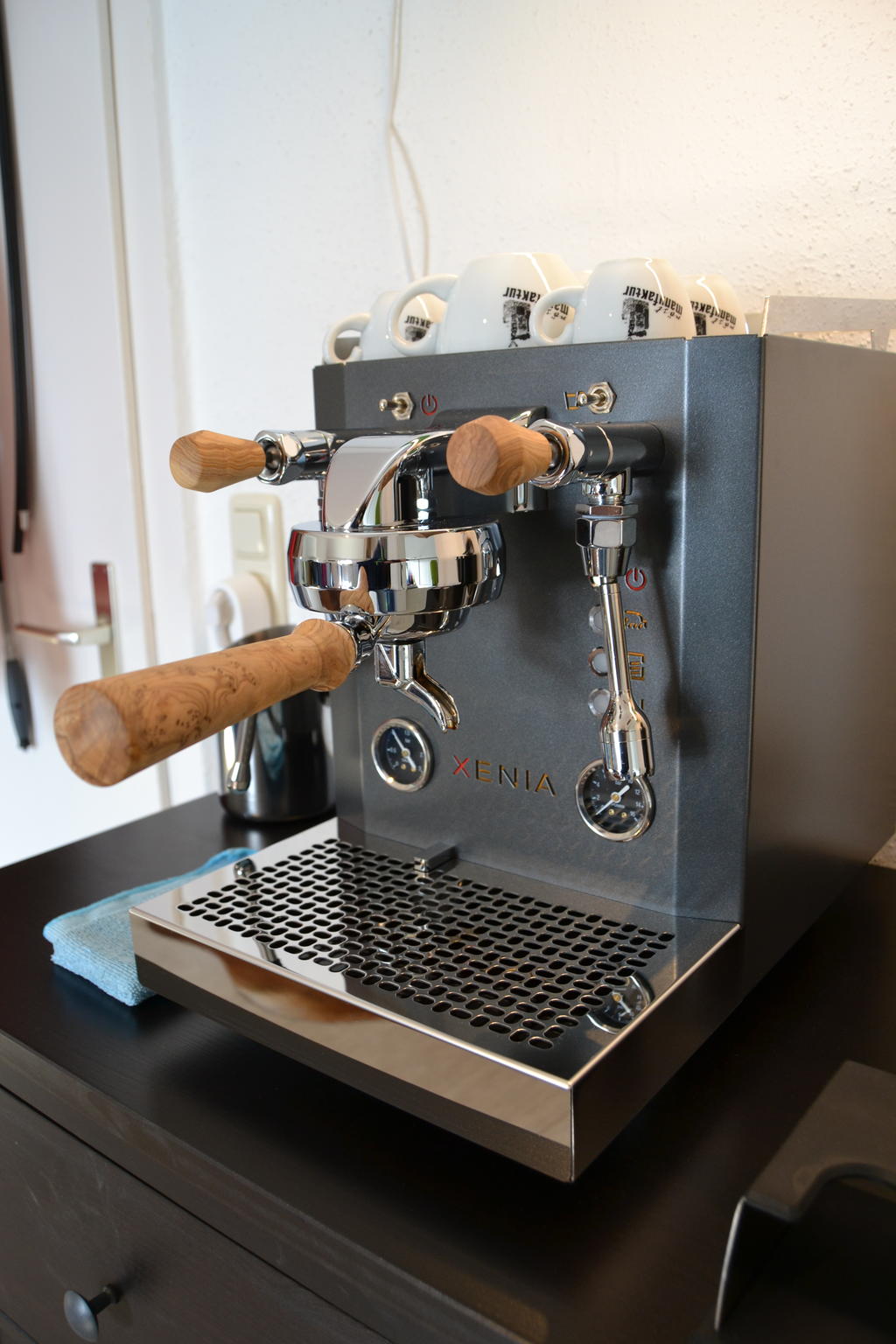
The brew group is significantly smaller and looks 'lighter' than the E61 group. With its rounded edges, it appears very simple and straightforward and does not dominate the machine.
Overall, the machine is only 27 cm wide and, together with a grinder, fits on small side tables such as the Bekväm kitchen trolley from Ikea.
Almost all other machines are offered with a stainless steel housing. It looks chic, but stands out in many kitchen facilities and requires a lot of cleaning. We also offer reflective stainless steel as a standard variant, but the majority of customers prefer satin-finished or colour-coated panels. These so-called anodised colors come from the rim refinement and are slightly rough, but do not appear dull. They are very convincing both visually and haptically. Here you can get an idea of the enthusiasm of customers for their beautiful machines—these are all pictures made by customers: https://www.xenia-espresso.de/impressionen/
This topic also includes alternatives for the usual plastic handles. Here we primarily rely on wood—mainly olive wood, because it goes very well with Italy and espresso. We made the handles ourselves until last year and bought felled olive trees from southern Germany or Spain.
